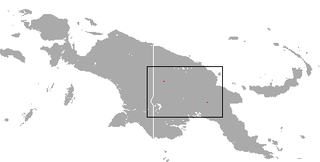 W
WBulmer's fruit bat is a megabat endemic to New Guinea. It is listed as a critically endangered species due to habitat loss and hunting. It is the only member of the genus Aproteles. Due to its imperiled status, it is identified by the Alliance for Zero Extinction as a species in danger of imminent extinction.
 W
WThe Chatham shag, also known as the Chatham Island shag, is a species of bird in the cormorant and shag family, Phalacrocoracidae. It is endemic to the Chatham Islands of New Zealand. For a long time the species was placed in the genus Phalacrocorax; today it is mostly placed with the other blue-eyed shags of New Zealand and Antarctica in the genus Leucocarbo. Its closest relative is the Otago shag of South Island.
 W
WThe Christmas frigatebird, or Christmas Island frigatebird, is a seabird of the frigatebird family Fregatidae which is an endemic breeder to Christmas Island in the Indian Ocean.
 W
WThe Christmas Island shrew, also known as the Christmas Island musk-shrew is an extremely rare or possibly extinct shrew from Christmas Island. It was variously placed as subspecies of the Asian gray shrew or the Southeast Asian shrew, but morphological differences and the large distance between the species indicate that it is an entirely distinct species.
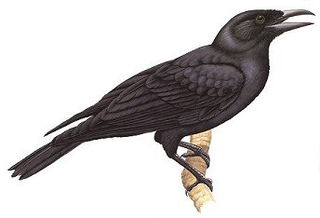 W
WThe Mariana crow is a species of the crow family from the South Pacific. It is a glossy black bird about 15 inches (38 cm) long and known only from the islands of Guam and Rota.
 W
WThe Fiji crested iguana or Fijian crested iguana is a critically endangered species of iguana native to some of the northwestern islands of the Fijiian archipelago, where it is found in dry forest.
 W
WThe Fly River water rat is a species of rodent in the family Muridae. It is found only in Papua New Guinea. Its natural habitat is subtropical or tropical dry forests. It is threatened by habitat loss.
 W
WThe greater monkey-faced bat, is a megabat endemic to Solomon Islands, Bougainville, in Papua New Guinea, and nearby small islands. It is listed as a critically endangered species and the population is decreasing. It is the largest monkey-faced bat.
 W
WThe crow honeyeater is a very large honeyeater endemic to humid forests in New Caledonia in the South Pacific.
 W
WThe montane monkey-faced bat is a megabat endemic to the Solomon Islands. It is listed as a critically endangered species. Due to its imperiled status, it is identified by the Alliance for Zero Extinction as a species in danger of imminent extinction. In 2013, Bat Conservation International listed this species as one of the 35 species of its worldwide priority list of conservation. Only one individual has ever been found.
 W
WThe New Caledonian owlet-nightjar, also known as the enigmatic owlet-nightjar, is a large owlet-nightjar with vermiculated grey-brown and black plumage. It has a long, slightly rounded tail, short, rounded wings, and long, stout legs. Its voice is unknown, but other owlet-nightjar species make churring and whistling sounds. It is the second-largest known owlet-nightjar, much larger than the Australian owlet-nightjar.
 W
WThe New Caledonian rail is a large and drab flightless rail that is found on the island of New Caledonia in the Pacific. It is a dull brown above, with grey underparts, and has a yellowish, downward-curving bill. No one knows what it sounds like and it is not known whether it is nocturnal or crepuscular.
 W
WThe New Guinea big-eared bat, species Pharotis imogene, is a vespertilionid bat endemic to Papua New Guinea. It is listed as a critically endangered species due to ongoing habitat loss. It is the only known member of the genus Pharotis, which is closely related to Nyctophilus.
 W
WThe northern glider is a species of marsupial in the family Petauridae. It is endemic to Papua New Guinea, becoming known to science in 1981 after being discovered in the Torricelli Mountains. This species has been found in primary, mid-montane tropical moist forests. It is also known from rural gardens close to forest. The northern glider is Critically Endangered because its occurrence is less than 100 km2, all individuals are located within a single area, and a continuing decline of its habitat quality due to deforestation and human encroachment. They also face a major threat from hunting.
 W
WThe Polynesian ground dove is a critically endangered species of bird in the family Columbidae. It is endemic to the Tuamotus in French Polynesia with recent records from the atolls of Matureivavao, Rangiroa, Tenararo, Morane, Vahanga and perhaps Tikehau. It favors tropical forests, especially with Pandanus tectorius, Pisonia grandis and shrubs, but it has also been recorded from dense shrub growing below coconut palms. It is threatened by habitat loss and predation by introduced species such as cats and rats. The total population is estimated to be around 100-120 birds and it has already disappeared from several islands where it formerly occurred.
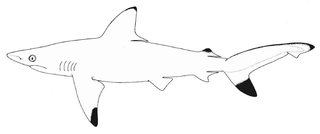 W
WThe Pondicherry shark is an extremely rare species of requiem shark, in the family Carcharhinidae. A small and stocky gray shark, it grows not much longer than 1 m (3.3 ft) and has a fairly long, pointed snout. This species can be identified by the shape of its upper teeth, which are strongly serrated near the base and smooth-edged near the tip, and by its first dorsal fin, which is large with a long free rear tip. Furthermore, this shark has prominent black tips on its pectoral fins, second dorsal fin, and caudal fin lower lobe.
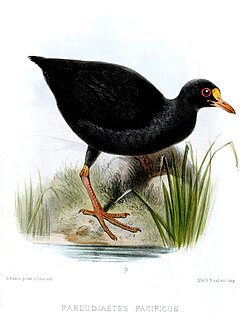 W
WThe Samoan woodhen, also known as Samoan wood rail, is a nearly flightless rail endemic to the Samoan island of Savai'i, and probably extinct. As it has evolved adaptations for a more terrestrial lifestyle and at least partly nocturnal habits, it is probably better placed in a distinct genus, Pareudiastes, but this issue has not yet been thoroughly researched. It was known as puna'e to the native Samoans; this was said to relate to the bird's habit of making a jumping dash into cover when startled from its resting place.
 W
WSamoana attenuata is a species of air-breathing tropical land snail, a terrestrial pulmonate gastropod mollusk in the family Partulidae. This species is endemic to French Polynesia.
 W
WSamoana burchi is a species of a land snail, a terrestrial gastropod mollusk in the Partulidae family. This species is endemic to Tahiti, French Polynesia.
 W
WSamoana fragilis is a species of tropical, air-breathing land snail, a terrestrial, pulmonate, gastropod mollusk in the family Partulidae. This species is known by the common name Fragile Tree snail and endemic to Guam and island Rota.
 W
WThe longcomb sawfish, narrowsnout sawfish or green sawfish is a species of sawfish in the family Pristidae, found in tropical and subtropical waters of the Indo-West Pacific. It has declined drastically and is now considered a critically endangered species.
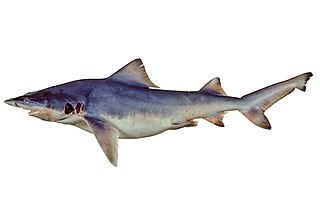 W
WThe northern river shark or New Guinea river shark is a species of requiem shark, in the family Carcharhinidae, found in scattered tidal rivers and associated coastal waters in northern Australia and in Papua New Guinea. This species inhabits areas with poor visibility, soft bottoms, and large tides, with immature sharks ranging into fresh and brackish water. It is similar to other river sharks in having a stocky grey body with a high back, tiny eyes, and broad fins. It measures up to 2.5 m (8.2 ft) long.
 W
WSir David's long-beaked echidna, also known as Attenborough's long-beaked echidna or the Cyclops long-beaked echidna, is one of the three species from the genus Zaglossus that occurs in New Guinea. It is named in honour of Sir David Attenborough, the eminent naturalist. It lives in the Cyclops Mountains, which are near the cities of Sentani and Jayapura in the Indonesian province of Papua.
 W
WThe Pohnpei starling, also known as Pohnpei mountain starling or Ponape mountain starling, is an extremely rare or possibly extinct bird from the family of starlings (Sturnidae). It is endemic to the island of Pohnpei in the Pacific Ocean. It was called "sie" by the Pohnpei islanders. It was named after the Austrian ornithologist August von Pelzeln (1825–1891).
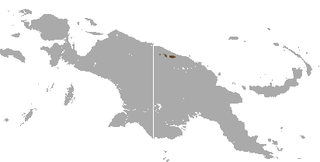 W
WThe tenkile, also known as Scott's tree-kangaroo, is a species of tree-kangaroo in the family Macropodidae. It is endemic to a very small area of the Torricelli Mountains of Papua New Guinea. Its natural habitat is subtropical or tropical dry forests. It is threatened by habitat loss and by hunting. The tenkile is listed as endangered due to hunting and logging activities in Papua New Guinea. The tenkile is hunted for its meat, and is the main protein source for the residents of Papua New Guinea. The population of Papua New Guinea has increased in recent years due to improvements in healthcare; therefore increasing need in tenkile meat which means that more tenkiles are being hunted. Additionally, tenkiles are poached for their fur and are captured and sold as a part of the illegal pet trade. Domesticated dogs also hunt tenkiles. Deforestation in Papua New Guinea affects all tree-Kangaroos, however industrial logging that occurs in the Torricelli Mountain Range decreases the species' already restricted habitat. The Torricelli Mountain Range faces additional deforestation due to the timber industry, and the production of coffee, rice and wheat.
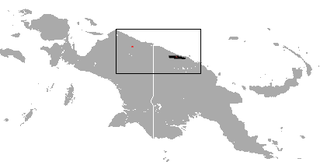 W
WThe golden-mantled tree-kangaroo is a species of tree-kangaroo endemic to the Northern New Guinea montane rain forests ecoregion of northern New Guinea island.
 W
WThe Vanikoro flying fox, also known locally as basapine, is a species of bat in the family Pteropodidae. It has only been found in the Vanikoro island group located in the southern Solomon Islands. The species as a whole was originally known from just a few specimens collected sometime before 1930 but following surveys conducted on the island in the early 1990s did not detect this species again causing the Vanikoro flying fox to be listed as extinct. However, the species was rediscovered by a survey conducted in late 2014 which indicated a population in the high hundreds or low thousands and reported all observations.
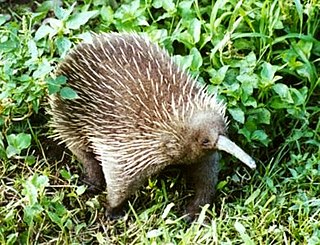 W
WThe western long-beaked echidna is one of the four extant echidnas and one of three species of Zaglossus that occur in New Guinea. Originally described as Tachyglossus bruijnii, this is the type species of Zaglossus.
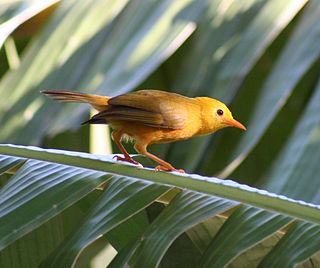 W
WThe golden white-eye is a species of bird in the white-eye family, Zosteropidae. It is the only species within the genus Cleptornis. The golden white-eye was once considered to be a honeyeater in the family Meliphagidae and although it is now known to be a white-eye, its position within that family is still uncertain. The species is restricted to the islands of Saipan and Aguijan in the Northern Mariana Islands, where it is sympatric and competes with the related bridled white-eye. The golden white-eye has golden plumage and a pale eye-ring. It feeds on insects, fruit, and nectar and forages in pairs or small family groups. The bird is monogamous and lays two eggs in a small cup nest.